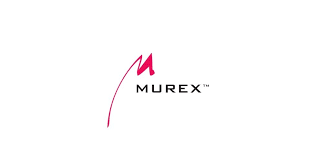
May 17, 2023 (NO COMMENTS)
In today’s rapidly evolving financial landscape, institutions face the challenge of managing complex financial instruments and transactions efficiently. To address this, they rely on advanced technology platforms that offer robust solutions. Two prominent players in this space are Murex vs Calypso Adenza. In this blog, we will dive deep into the features, strengths, and differences of these two leading financial technology platforms. Murex and Calypso Adenza are comprehensive software platforms that cater to the needs of financial institutions, including banks, asset managers, and hedge funds. They provide solutions for trading, risk management, collateral management, and regulatory compliance.
Functionality and Features
There could be an entire discussion on Murex vs Calypso Adenza as they offer a wide range of features, but there are some notable differences:
- Trading: Murex is renowned for its extensive trading capabilities, supporting a broad range of asset classes such as fixed income, equities, derivatives, and commodities. Calypso Adenza also provides comprehensive trading functionalities but focuses more on complex derivatives and structured products.
- Risk Management: Murex offers sophisticated risk management tools, including real-time risk monitoring, scenario analysis, and stress testing. Calypso Adenza, on the other hand, emphasizes enterprise-wide risk management, enabling institutions to aggregate and analyze risk across multiple business units.
- Collateral Management: Collateral management is a different thing when it comes to Murex vs Calypso Adenza. Murex boasts robust collateral management capabilities, enabling institutions to efficiently manage collateral across different asset classes. Calypso Adenza provides similar functionality but also offers specialized tools for collateral optimization and margin.
- Regulatory Compliance: Both platforms provide features to help institutions comply with regulatory requirements. Murex has a strong track record in regulatory reporting, while Calypso Adenza focuses on comprehensive compliance workflows and audit trails.
Customization and Flexibility
One of the key considerations for financial institutions is the ability to customize the platform to meet their specific needs. Murex is known for its highly customizable architecture, enabling institutions to tailor workflows, reports, and interfaces to their requirements. Calypso Adenza also offers a high level of flexibility, with a modular structure that allows institutions to configure the platform based on their business needs.
- Scalability and Performance: When comparing Murex vs Calypso Adenza it becomes a different thing in performance. As financial institutions handle large volumes of transactions, scalability, and performance are crucial factors to consider. Murex has a proven track record in handling high transaction volumes and has been adopted by large global banks. Calypso Adenza also boasts scalability, with a focus on optimizing performance and throughput for demanding trading environments.
- Integration and Ecosystem: Integration with other systems and connectivity to external market data providers are essential for seamless operations. Murex has a broad partner ecosystem and offers numerous pre-built integrations with market data providers, clearinghouses, and other systems. Calypso Adenza provides similar integration capabilities and emphasizes connectivity with its vast network of counterparties.
- Implementation and Support: The implementation process and ongoing support are critical aspects to consider when choosing a financial technology platform. Murex has a reputation for providing extensive support throughout the implementation phase and has a dedicated team for post-implementation assistance. Calypso Adenza also offers comprehensive implementation support and has a global support network to assist clients.
Conclusion
Both Murex vs Calypso Adenza are market-leading financial technology platforms that offer comprehensive solutions for trading, risk management, and regulatory compliance. While they share many similarities, each platform has its unique strengths and focuses on different areas. Financial institutions should carefully evaluate their specific requirements and consider factors such as functionality, customization, scalability, integration.
Holen Sie sich erstklassige Replica Rolex Uhren. Entdecken Sie unsere Nachbildungen und Hommage-Uhren, die wie echt aussehen.